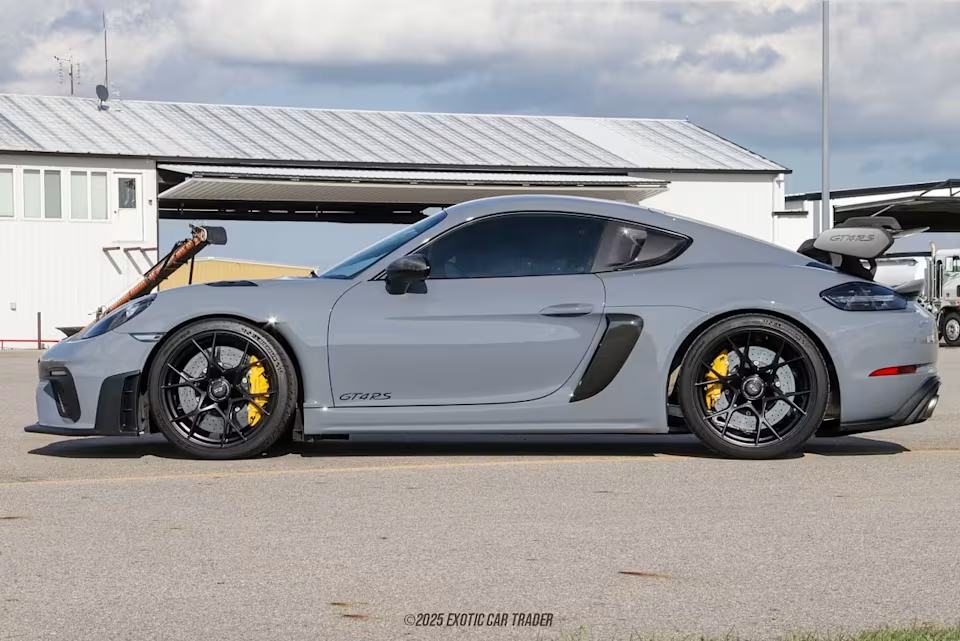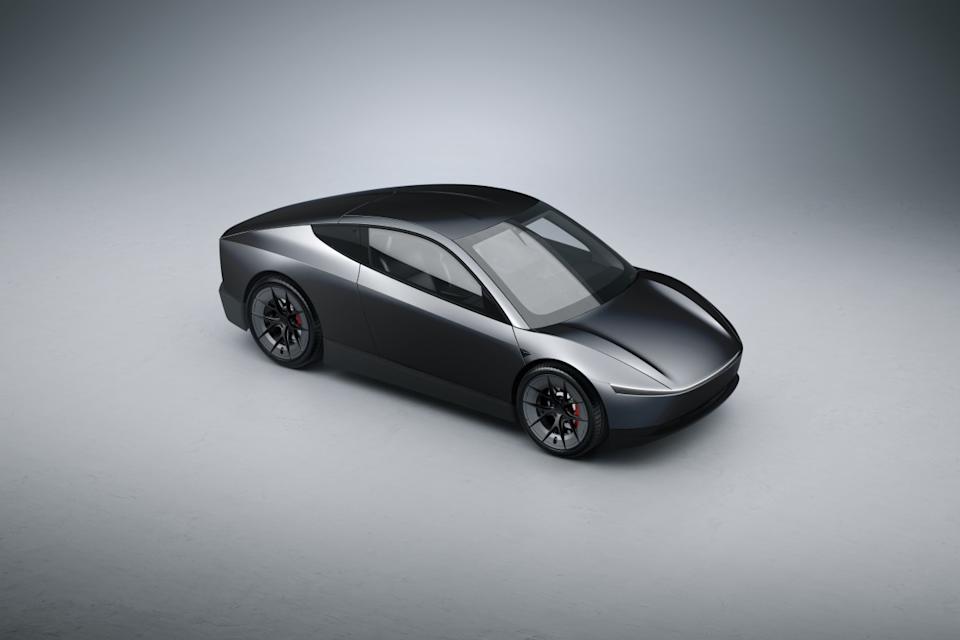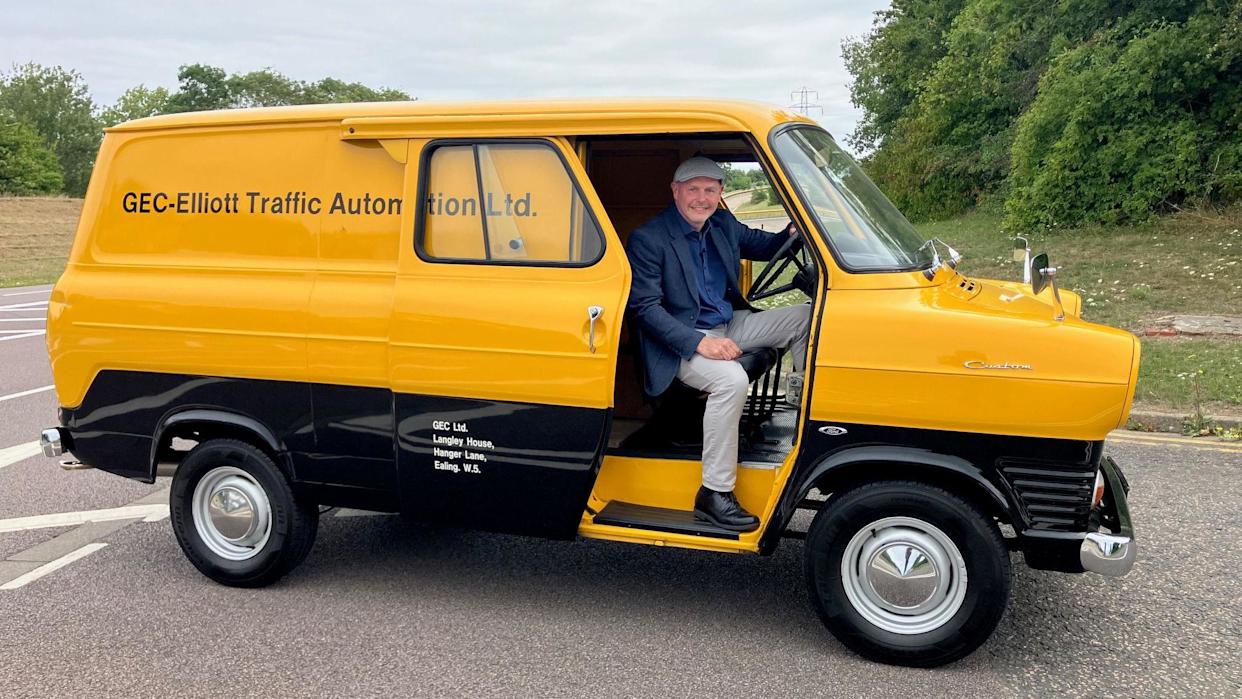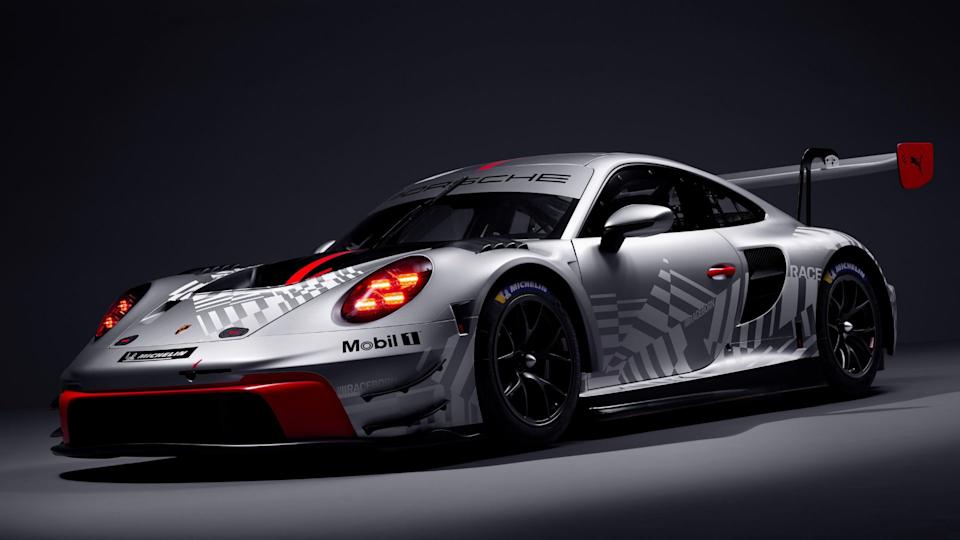Hydrogen Isn't Dead - But It Isn't Thriving, Either originally appeared on Autoblog.
EVs overshadow hydrogen vehicle sales by millions
Zero-emissions vehicles are on the rise, but there’s a clear winner when it comes to the fuel source. There are millions of electric vehicles on the road, backed by a robust charging infrastructure to boot. According to the Hydrogen Fuel Cell Partnership, there are fewer than 20,000 hydrogen fuel cell vehicles (FCEVs) on American roadways, and all of them are located in California. That’s a massive gap, and it isn’t likely to close anytime soon.

Only Toyota, Honda, and Hyundai currently offer hydrogen-powered vehicles for sale in California, and the sales numbers aren’t good. In Q2 2024, for example, there were fewer than 100 FCEVs sold in the United States. The price of the vehicles is a clear factor, with the cheapest model starting at $50,000, but that isn’t the only thing holding hydrogen back. A lack of refueling infrastructure and a reliable source of hydrogen fuel has proven detrimental to FCEV adoption in both the United States and on a global scale.
While European hydrogen bus trials are showing mixed results, others are just entering the world of fuel cells. India and Saudi Arabia are both working on implementing hydrogen-powered buses into their public infrastructure. Hydrogen seems to have found a place in military applications as well, and new research indicates a solution to the fuel sourcing issue could be near. With so much interest in hydrogen from government entities and private corporations alike, I’m not counting hydrogen out of the game just yet - but I don’t expect it to gain much ground, at least not within the next decade.

There are three FCEVs for sale in the United States
While California may be the most populous state, there are only three automakers with hydrogen FCEVs on the market. Toyota’s Mirai sedan, originally introduced for the 2015 model year, was the first of its kind in the Golden State. Hyundai followed with its Nexo crossover for the 2019 model year. The Honda CR-V e:FCEV, which was unveiled in February 2024, is the latest hydrogen-powered model to hit the market.

The Toyota Mirai XLE is the sole model offered by the Japanese automaker, and it comes with a fully-loaded standard equipment list. Priced from $51,795, the Mirai’s hydrogen fuel cell system comes paired with a single-speed transmission and rear-wheel drive. It produces 182 horsepower and 300 lb-ft of torque. Per the EPA, it earns up to 76 mpg in the city and 71 mpg on the highway. In addition to Toyota’s latest safety tech and 14-speaker JBL premium audio system, the Mirai features wireless smartphone compatibility, smartphone charging, and 19-inch wheels.

The Hyundai Nexo hasn’t seen much in the way of changes since 2023, but the Korean automaker says major updates are expected for the 2026 model year. Until then, the Nexo starts at over $60,000 with two trim levels to choose from. The Nexo’s hydrogen fuel cell system sends power to the front wheels and delivers 161 horsepower and 291 lb-ft of torque. A 12.3-inch touchscreen display comes standard, as does Apple CarPlay and Android Auto compatibility. The base Blue trim rides on 17-inch wheels, while the Limited trim gets upgraded to 19-inch wheels.

The Honda CR-V e:FCEV is the latest model to join the segment, and it comes with a twist. Honda’s hydrogen entry features a plug-in hybrid powertrain that allows it to travel up to 29 miles on battery power alone. The hydrogen powertrain produces up to 174 horsepower and 229 lb-ft of torque, earning up to 94 mpg in the city and 79 mpg on the highway. The CR-V e:FCEV features wireless Apple CarPlay and Android Auto connectivity, as well as smartphone charging. It starts at $50,000 and includes black 18-inch wheels, LED lighting, and a hands-free power tailgate.
General Motors and BMW have invested in hydrogen fuel cells
Toyota, Honda, and Hyundai may have hydrogen-powered passenger vehicles on the market today, but they aren’t the only automakers working on FCEV development. General Motors and BMW are two other manufacturers throwing their hats into the world of zero-emission, hydrogen fuel cell solutions.
General Motors made history back in 1966 with the GM Electrovan, the world’s first hydrogen-powered vehicle. More recently, the American automaker took another step forward by partnering with Honda to create hydrogen fuel cells. These fuel cells will primarily be used for commercial purposes, like heavy equipment and generators, as well as passenger vehicles, including the Honda CR-V e:FCEV.
GM and Honda’s joint venture, Fuel Cell Systems Manufacturing LLC, has so far built only one product. The sole hydrogen fuel cell is around the size of a standard four-cylinder engine and can generate up to 77 kW, the equivalent of 103 horsepower. Multiple fuel cells can be combined to provide more power, and Honda plans to sell 2,000 of the fuel cells throughout 2025, with 500 reserved for the CR-V e:FCEV. While Honda is going forward with passenger vehicles, GM’s primary interest remains in heavy equipment, generators, and heavy-duty vehicles, like garbage and dump trucks.
GM’s role in hydrogen fuel cell development could be coming to an end soon, though. According to Hydrogen Insight, as of May 2025, the automaker has paused fuel cell production at its manufacturing facility. The American manufacturer will make a final decision on the plant’s fate in the near future. To date, GM has invested $55 million in the joint project.
Heading over to Europe, BMW is taking a stand on the side of hydrogen fuel cell development as well. The German automaker has partnered with Toyota to bring the BMW iX5 Hydrogen to the road. At its core, the hydrogen-powered SUV features Toyota’s fuel-cell system capable of producing up to 125 kW, or around 170 horsepower. According to the manufacturer, the iX5 Hydrogen boasts the most powerful passenger-car fuel-cell system and dedicated battery to date, producing 401 horsepower combined.
BMW’s hydrogen efforts predate the iX5 Hydrogen by more than 40 years. Their first experimental vehicle, a hydrogen-powered BMW 5 Series 520, made waves back in 1979. Afterwards, BMW continued to work on hydrogen development, creating a small series of prototypes and production models based on the 7 Series. In 2023, BMW took a step forward by testing the BMW iX5 Hydrogen pilot fleet around the world. With testing completed, BMW is preparing to bring not just the iX5 Hydrogen, but an entire series of hydrogen fuel cell vehicles to market in 2028.

Notably, BMW has used hydrogen in its in-house manufacturing plant logistics since 2013, when the German automaker built the country’s first indoor hydrogen station at Plant Leipzig. As of April 2025, BMW was testing emission-free heavy-duty transport in the form of hydrogen trucks at Plant Leipzig. Dubbed H2Haul, the project is the next step in BMW’s efforts to connect transport, production, and products.
Hyundai’s hydrogen efforts support its logistical operations
Not long ago, Hyundai and Saudi Arabia announced their collaboration on a trial run of the South Korean automaker’s latest hydrogen-powered bus. This collaboration proves there are plenty of stakeholders in the future of hydrogen, ranging from government entities to private third-party corporations.
The South Korean automaker’s efforts go beyond a single project in Saudi Arabia’s Eastern Province, though. The manufacturer uses hydrogen-powered vehicles in its own logistical operations. Most recently, Hyundai and Glovis America introduced 21 XCIENT hydrogen fuel cell trucks to support operations at the massive Hyundai Motor Group Metaplant America (HMGMA) in Georgia.

“At HMGMA, we are committed to creating sustainable transportation solutions,” said Oscar Kwon, HMGMA CEO. “Our Hyundai XCIENT hydrogen fuel-cell trucks that support the Metaplant release zero emissions and offer a cleaner alternative to the traditional freight logistics methods used at other manufacturing facilities.”
Additionally, Hyundai and Glovis America will build a mobile hydrogen refueling station at HMGMA to support a closed-loop hydrogen logistics system. A hydrogen production and refueling station is expected to be announced at a later date.

At CES 2024, Hyundai introduced the world to HTWO, its hydrogen business brand that covers each stage of hydrogen, all the way from production to utilization. In April, the Korean automaker announced that HTWO Energy Savannah plans to build a dual-purpose hydrogen and electric station to support heavy-duty zero-emission vehicles. The station will be located around 10 miles from the Port of Savannah, Georgia. Operations are expected to begin later this year.
“HTWO Energy Savannah is a breakthrough hydrogen production and refueling station for the heavy-duty trucking industry, allowing zero-emissions trucks to quickly and easily refuel at a single convenient location in the Savannah region,” said Jim Park, SVP of commercial vehicle and hydrogen fuel cell business, Hyundai Motor North America.

Honda CR-V e:FCEV tackled Pikes Peak
Tackling the likes of Pikes Peak is no small mountain to climb, with 156 turns throughout the 12.42-mile course. Honda previously set a precedent by taking on the “Race to the Clouds” with multiple electrified zero-emissions entries, starting with an electric Honda Civic wagon in 1994. This year, Honda raised the stakes with a new zero-emissions entry. The hydrogen-powered CR-V e:FCEV officially took on Pikes Peak with the help of a portable hydrogen refueling system.

There’s no denying refueling infrastructure is a core detriment to hydrogen adoption, not to mention the fact that hydrogen is still an evolving technology. That makes entering competitions like Pikes Peak somewhat difficult. Zero Emissions Industries’ (ZEI) FTcase, a portable hydrogen refueling system, helped make the CR-V e:FCEV’s hill climb possible. The suitcase-sized system weighs under 100 lbs. and doesn’t require any expertise to use.
The 2025 Honda CR-V e:FCEV runs on the automaker’s second-generation fuel cell system, providing increased efficiency and improved durability. The crossover combines hydrogen fuel cell technology with a plug-in hybrid charging capability, resulting in 29 miles of electric-only range and an EPA-estimated 270-mile driving range.

Honda’s sole hydrogen-powered offering is built by hand at the Honda Performance Center in Marysville, Ohio. The CR-V e:FCEV is available in a single trim level priced from $50,000. It’s the first of its kind to combine hydrogen fuel cell technology with a plug-in hybrid system. While it's built in Ohio, like all other hydrogen vehicles, you can only buy the Honda CR-V e:FCEV in California.
Hydrogen bus trial results revolve around fuel
While hydrogen fuel cell vehicles are limited in number on the consumer side, Europe is still testing hydrogen-powered buses on public roadways. Unfortunately, the results are mixed, with fuel expenses, production, and availability serving as major obstacles. Essen and Mülheim, for example, ended their hydrogen bus trials after fuel station subsidies fell through. The two German cities own 19 hydrogen buses between them, and they now need to travel 55 miles to refuel.

Brussels, Belgium, ended its hydrogen bus trials as a result of high fuel costs, while Aberdeen, United Kingdom, removed its hydrogen buses from service due to a lack of fuel deliveries. Wiesbaden, Germany, ended their hydrogen bus program after their refueling station ran out of funds. These results aren’t uncommon throughout Europe and the United Kingdom.
According to a 2023 report from Transport for London (TfL), hydrogen buses cost nearly twice as much to operate as their diesel counterparts, at £1.50 versus £0.80 per mile. Battery-electric buses cost the least to operate at £0.65 per mile. For that reason, many cities throughout Europe and the United Kingdom are switching out both their hydrogen and diesel buses in favor of electrified models.

While hydrogen buses saw an increase of just three percent throughout Europe in 2024, battery-electric models continued to be the most popular zero-emissions option with 46% market share. There are plenty of hydrogen bus trials that ended due to cost, refueling issues, and gaps in the supply chain. Notably, however, there are several trials that have seen some success, largely due to their steady source of hydrogen fuel. Auxerre, France, for example, has a local hydrogen production facility that produces fuel via electrolysis.
Cologne is one of the few cities that can mark its hydrogen bus trials as a clear, undeniable success. Home to the largest hydrogen bus fleet in Europe, with more than 100 units on the road, Cologne is also home to a thriving chemical industry where hydrogen is produced as a byproduct, which has proven to be a stable fuel source. Whether you count that as a fluke or not is up for debate, but it's certainly a unique situation.

Despite the mixed results of past and present hydrogen bus trials, some heavily populated regions haven’t written off fuel cell vehicles as an alternative to fossil fuels. The region of Île-de-France contracted Solaris Bus & Coach to provide 22 new hydrogen buses as part of the pilot program not long ago. India is also entering the world of hydrogen, with the Ministry of New and Renewable Energy announcing hydrogen bus trials will begin within the next two years. The Indian program will test 37 buses and nine refueling stations in Delhi and Mumbai, among other major hubs.
Hydrogen has military applications, but fuel is a roadblock
The viability of hydrogen in public transportation is fairly hit or miss, but Honda’s Pikes Peak run, specifically utilizing ZEI’s FTcase, has proven that hydrogen can be a viable alternative fuel source for military applications. The U.S. Special Forces Operations Command has targeted alternate fuel sources with low thermal, visual, and audible signatures. Hydrogen checks all of those boxes - but sourcing hydrogen itself remains an issue.

During the Obama administration, the Department of Defense prioritized solar power, but the Pentagon recently shifted to deploying equipment powered by hydrogen fuel cells. Joint Base Pearl Harbor-Hickam in Hawaii put a 600-kW fuel cell microgrid into operation, and, as it turns out, the base already has a reliable hydrogen fuel source. Electrolysis, which involves extracting hydrogen from water through a catalyst, membrane, and electricity, has proven to be the most promising. The military base is already equipped with solar arrays, making it a viable candidate for self-sufficiency in hydrogen fuel production.
Army researchers are working on making hydrogen more efficient by improving the life of fuel cells, catalysts, and cleansing systems. Currently, hydrogen is primarily sourced from natural gas and coal, which doesn’t exactly make a case for reducing dependency on fossil fuels. While electrolysis is a promising method of hydrogen production, it requires existing equipment and infrastructure. With the military getting involved in hydrogen fuel cell research and fuel production, however, it’s only a matter of time before we see more advances in fuel cell-powered equipment.

New research could increase hydrogen’s viability
Sustainable hydrogen fuel production is a missing piece of the FCEV puzzle, but researchers at MIT may have taken a step closer to green hydrogen not long ago. Currently, hydrogen is produced through less-than-stellar methods with a heavy reliance on fossil fuels. In a new study, engineers have found an alternative process with scalable potential that uses aluminum and seawater to create hydrogen.
For every kilogram of hydrogen produced from sourcing to transportation, the process generates 1.45 kilograms of carbon dioxide. Methods that utilize fossil fuels, for comparison, create over 10 kilograms of carbon dioxide for every kilogram of hydrogen produced. The engineering team calculated the cost of production at $9 per kilogram.

“We’re in the ballpark of green hydrogen. One of the main benefits of using aluminum is the energy density per unit volume. With a very small amount of aluminum fuel, you can conceivably supply much of the power for a hydrogen-fueled vehicle,” said Dr. Aly Kombargi, MIT mechanical engineering graduate and the study’s lead author.
To produce hydrogen at scale, the process begins by obtaining scrap aluminum, then shredding it into pellets and treating it with gallium-indium. Next, the aluminum would be transported to a fuel center located near seawater. This method produces hydrogen and boehmite, a byproduct that can be used in semiconductor production and could be sold to electronics manufacturers to further reduce hydrogen production costs.

Hydrogen refuelling infrastructure needs to expand
No matter what way you cut it, hydrogen refueling infrastructure needs to expand if fuel cell vehicles are ever going to see mass adoption. While there are refueling stations in California, some owners say hydrogen fuel delivery shortages and issues are a regular occurrence. As a result, some consumers have filed a class action lawsuit against Hyundai, indicating that they were misled about the viability of hydrogen cars and the reliability of hydrogen refueling stations.

"We started running into situations where you would go to a station and there might be a couple cars in line and you might wait half an hour, 45 minutes or an hour, hour and a half, and then maybe the car in front of you got the last little bit of hydrogen or you hooked up to the station and then there was an error code,” Bernard Gross told 10 On Your Side.
In early 2024, Shell closed its hydrogen fueling stations due to supply issues and other external factors. Notably, hydrogen refueling stations are known to frequently malfunction, leading to downtime that ultimately renders the station inoperable. That’s not to mention the zoning issues and strict building regulations implemented by the state and local governments.

According to the Hydrogen Fuel Cell Partnership, there are 50 hydrogen refueling stations operating in California. Comparatively, there are over 10,400 gas stations and more than 16,500 public DC fast chargers operating in the same state. While modern hydrogen vehicles are technically still in their infancy, battery-electric vehicles have a massive lead. With lithium prices dropping and batteries becoming more affordable as a result, that isn’t likely to change.
If hydrogen vehicles ever want a fair chance at gaining market share, it’s going to come down to an expansion in infrastructure. EVs have proven that price isn’t necessarily an issue. The best-selling EV, the Tesla Model Y, for example, starts at just shy of $45,000 without the federal tax credit. There’s no doubt that Tesla’s investment in its supercharging network was a major factor in early EV adoption, although home charging was likely a major consideration among consumers as well.

If Toyota, Hyundai Motor Group, or Honda were to make a major investment in hydrogen refueling infrastructure, it could give FCEVs a fighting chance. Notably, however, such an investment would likely run into the billions, not to mention that they would need a way to reliably and efficiently produce and transport hydrogen. That’s a gargantuan task, and it could delay hydrogen fuel cell vehicle adoption indefinitely.
Final thoughts
While hydrogen certainly has a future in the automotive industry, its progress seems to have come to a standstill. Until the refueling infrastructure issue is resolved, it’s likely to stay that way. Fortunately, new research indicates a solution for generating hydrogen sustainability isn’t too far off. Whether that’s enough to push hydrogen fuel cell vehicles out of limbo and into the public eye is yet to be seen. If no one steps forward to develop refueling infrastructure, it's likely that hydrogen will remain in its current state as a niche alternative to fossil fuels, largely limited to public and commercial transportation, and potentially, military applications.
Hydrogen Isn't Dead - But It Isn't Thriving, Either first appeared on Autoblog on Aug 8, 2025
This story was originally reported by Autoblog on Aug 8, 2025, where it first appeared.








Comments